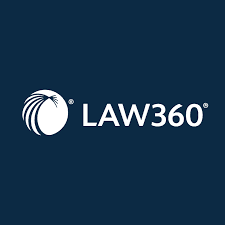
Schlanger Law Group LLP is a team of experienced class action attorneys dedicated to aggressively protecting consumer rights. With offices in New York and New Jersey we serve a broad range of clients nationwide with skill and integrity. Here are the answers to some class action FAQs our attorneys are frequently asked.
Class action lawsuits are designed to give individuals who have been treated unfairly by much larger entities fair access to the legal system. Often, one person’s damages are not significant enough to warrant a lawsuit, and the injured individual may not have the resources to fight back. One lawsuit representing the interests of many people who have been harmed in the same way helps to level the playing field.
A class action lawsuit is typically filed on behalf of a number of plaintiffs who have been harmed in the same way by the same company or entity. Then, the attorney representing the plaintiffs requests that the court “certify a class,” meaning that the attorney and the named plaintiffs are allowed to pursue the claim on behalf of everyone else who has suffered the same injury at the hands of the same entity.
In most cases, class members are automatically included in a class action suit. However, individuals can opt out. In fact, you have probably received a class action notice at some point, advising you that you are part of a class because you and the other class members were overcharged in some way (for example with illegal late fees, incorrect balance calculations, etc.) or you were all victims of a pattern of misconduct by a large company.
Those notices include deadlines and instructions for opting out. Typically, someone would opt out of the class action if they wanted to preserve their right to file an individual lawsuit based on the same injury. Because individual lawsuits are often cost-prohibitive for small claims, plaintiffs generally opt out only if they believe that they have more significant claims that would give rise to a larger verdict or settlement than they could obtain through a class action.
The named, or “lead” plaintiff in a class action suit is the one whose individual case becomes the class action lawsuit. Many class action lawsuits have multiple named plaintiffs. When the class is certified, “all similarly situated individuals” are added as plaintiffs, although their name is not included.
In order for a class action lawsuit to proceed, the class of plaintiffs must be determined to be too large to reasonably proceed as a group of individuals and the class must have sufficiently similar claims. In addition, the plaintiff or plaintiffs requesting class certification must demonstrate an ability to adequately represent the interests of the class as a whole. One element in that determination involves the qualifications of the attorney or attorneys who will be representing the class.
Not usually. One of the reasons class action lawsuits exist is that each individual’s damages may be relatively small—often too small to justify filing a lawsuit. You have probably seen large class action settlements in the news, but it is important to remember that those funds are being distributed to hundreds, thousands, or even tens of thousands of plaintiffs.
When a verdict is entered or a settlement reached in a class action lawsuit, a formula is typically applied to determine how much is paid to each plaintiff. The formula includes factors such as the number of times or length of time the plaintiff was subjected to the wrongful behavior and the extent of harm suffered.
However, it is important to note that most class action settlements involve a “service payment” or other special compensation for the consumer or consumers who were the named plaintiffs in the lawsuit. This is to compensate the named plaintiffs for devoting their time and energy to act on behalf of the whole class. The amount of these service payments (and whether to approve any payment at all) is ultimately determined by the judge, but they are typically several thousand dollars per named plaintiff.
Class action lawsuits can be a powerful consumer protection tool. When a large company has been cheating, misleading, or otherwise mistreating a large number of consumers over a long period of time, a class action lawsuit allows those consumers to join forces and put a stop to the company’s bad behavior. This allows consumers who have suffered relatively small damage to force better treatment for themselves and others.
Schlanger Law Group handles class action suits in the consumer protection arena, including those involving unfair debt collection, defective products, false advertising, hidden or unlawful fees, and unfair business practices.
There is no precise number of plaintiffs required for a class action suit. Rather, the court must determine that the class is “so numerous” that it would be impractical to join all members individually. While this is determined on a case-by-case basis, 40 or more individuals is typically deemed sufficient, whereas it would be unusual for a class of 20 or fewer to qualify. Many class action lawsuits include hundreds or thousands of plaintiffs.
Attorneys like the team at Schlanger Law Group LLP often accept class action cases on a contingency fee basis. This means we don’t receive payment in class action lawsuits unless we win or settle the case. When that happens, we are paid out of the judgment or settlement paid by the defendant.
For more comprehensive answers to these class action FAQs and other lawsuit questions, please contact Schlanger Law Group LLP.
We are committed to pursuing justice for consumers when large companies and other entities abuse their size, resources, and power. Our record of success on behalf of individuals and classes speaks for itself.
If you believe you have a viable class action case, please get in touch with us by phone at (212) 500-6114 or click on the button below to fill out a contact form.
Schlanger Law Group In The Media





Reach out to Schlanger Law Group for a free consultation, and let’s discuss your case with no upfront fees.
The information on this website is for general information purposes only. Nothing on this site should be taken as legal advice for any individual case or situation.
This information is not intended to create, and receipt or viewing does not constitute, an attorney-client relationship.
ATTORNEY ADVERTISEMENT | Past Results Do Not Guarantee Similar Outcomes in the Future
This site is protected by reCAPTCHA and the Google Privacy Policy and Terms of Service apply.
WEBSITE BY: VISIONTRACTION